*This post may contain affiliate links. Read more »
Gajar ka achar means carrot pickle in Hindi. In India, pickles hold a cherished place on the dining table, adding an explosive burst of tanginess, heat, and flavor to any meal. This traditional recipe is one of many beloved Indian pickles treasured not only for its incredible taste, but pickling has been one of the traditional ways of preserving food in Indian until recent times when refrigeration became more widespread.
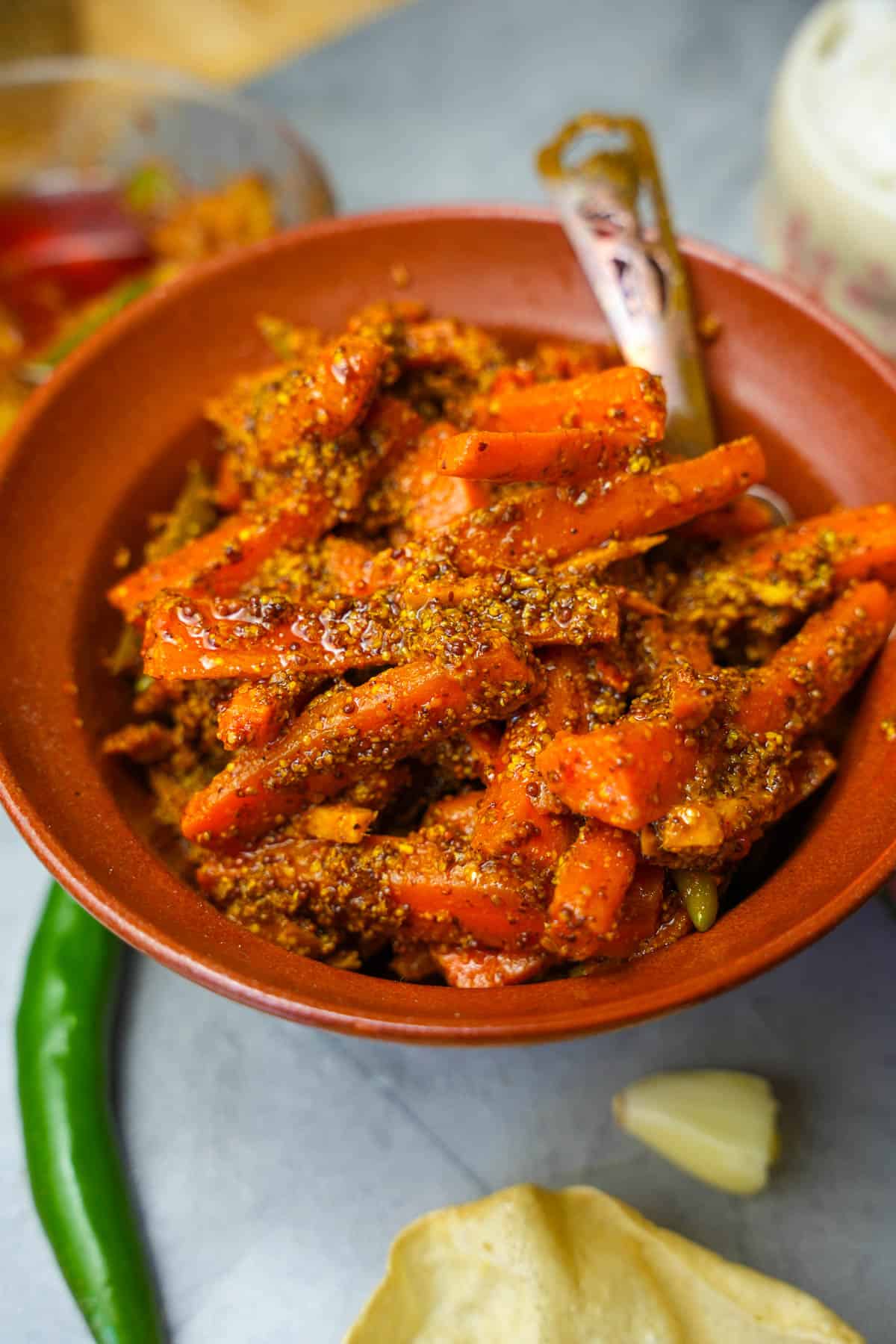

Enter your email & I'll send it to your inbox. Plus, get great new recipes from me every week!
By submitting this form, you consent to receive emails from Cinnamon Snail.
Indian Carrot Pickle is known by a few different names throughout India. In Tamil Nadu, it’s called Carrot Urugai, it’s sometimes called Gajorer Achar in West Bengal (the birthplace of Sri Caitanya Mahaprabhu!), and Gajjar Nu Athanu is the Gujarati name. These regional variations reflect the rich diversity of pickles across the country.
Carrot Achar is a versatile condiment, often enjoyed as a side dish or accompaniment to various Indian meals. It pairs perfectly with flatbreads like coriander-crusted aloo kulcha and parotta, adding a zesty touch to each bite. Additionally, its tangy and spicy profile makes it an excellent complement to rice dishes such as biryani, curries like saag aloo, or curried bottle gourd, and it makes a crazy-good addition to my vegan kofta on freshly grilled kuboos bread.
Prepared using simple natural ingredients, such as grated carrots, mustard seeds, fenugreek, turmeric, and an array of aromatic spices, this pickle offers a delightful balance of flavors similar to many traditional Indian pickles. The combination of sourness from tamarind and vinegar, the pungency of mustard, and the subtle heat of chilies and fresh ginger creates a symphony of flavor that uplifts just about anything you eat it with.
Gather up your ingredients, embrace the enticing aromas of Indian spices, and let's create a jar of this enticing Indian Carrot Pickle that will add a burst of flavor to your meals!
Jump to:
🥰Why you'll adore this Indian carrot pickle
✊Vegan, and Gluten-Free: Like all of my vegan Indian recipes, this instant carrot pickle (called so, because the par-cooking of the carrot makes it ready to eat sooner) contains no animal-based ingredients or gluten.
🪷Pure and sattvic: Free from onions and garlic, this achar can be included in bhoga offerings and is suitable for devotees and yogis. If you are following Ekadasi vrata, simply replace the white vinegar with lemon juice so that no grain-based ingredients are used.
💣An Absolute Flavor Bomb: This easy and delicious carrot achar has natural sweetness, sourness, and spicy notes, which elevate anything you put it on. Be it a humble bowl of coconut rice and masoor dal, or full Indian thali, a dollop of Gajar Ka Achar takes the meal’s flavor to the next level. If you want to make this recipe even faster, you can swap out the spices for a heaping spoonful of achar ka masala. This shortcut makes for excellent quick pickled carrots that still deliver bold flavor without the wait.
✅Tested and Approved Worldwide: Like all of the vegan recipes on this blog, this Carrot Pickle recipe has been tried, tested, and loved by food enthusiasts worldwide.


Curry in a Hurry - Vegan Indian Recipe Club! 🍲💌
This 6-day program is 100% FREE. Let me help you to master plant-based Indian cooking!
🥕 Ingredients for gajar ka achar
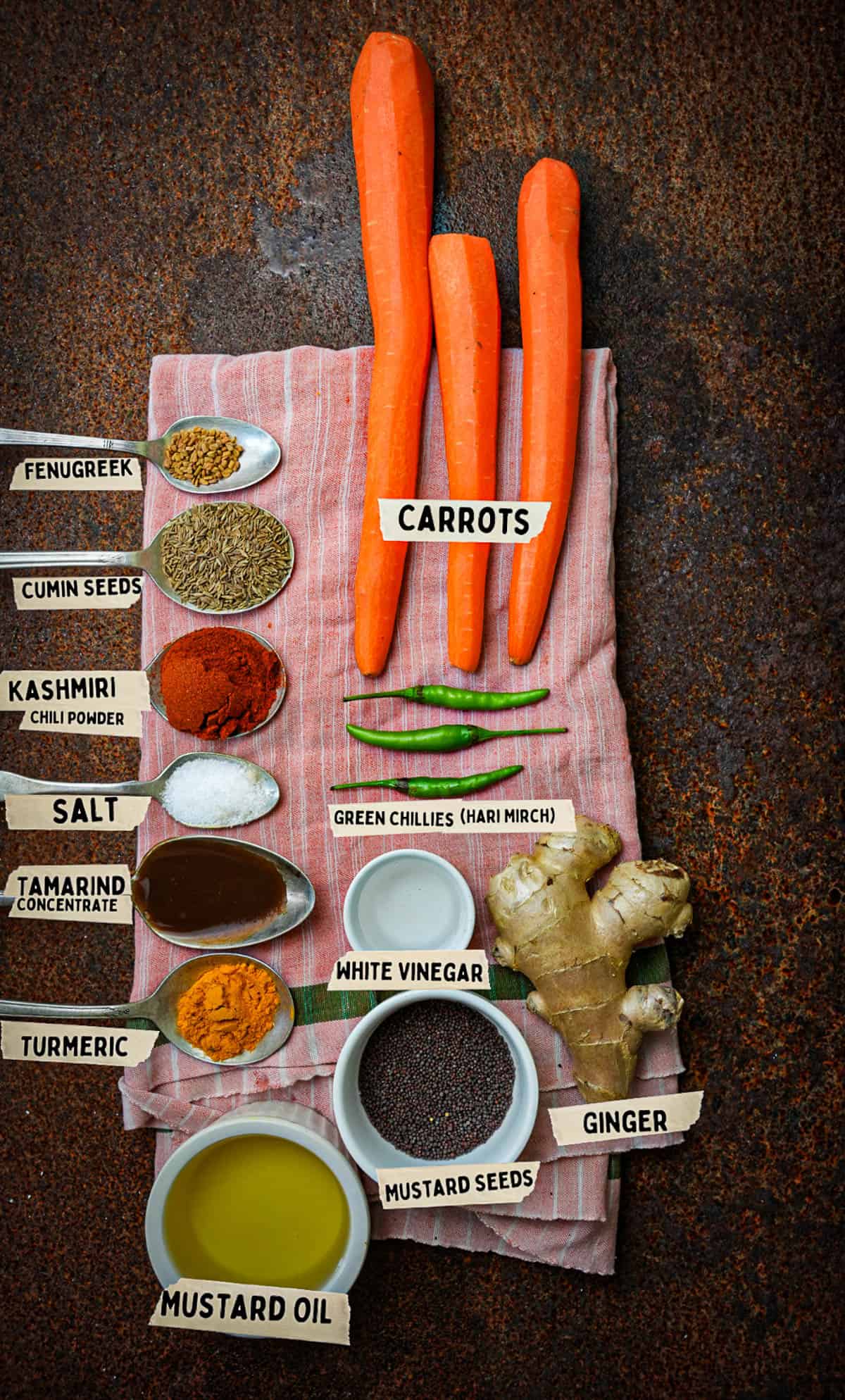
Fenugreek (Methi)
Fenugreek seeds are small, golden-brown seeds with a distinctive aroma and a slightly bitter taste. They are packed with nutrients such as iron, fiber, and antioxidants. In the Indian Carrot Pickle recipe, fenugreek seeds add a unique flavor and a touch of bitterness that balances the tanginess and spices.
Tamarind (Imli)
Tamarind concentrate is derived from the pulp of the tamarind fruit, known for its tangy and slightly sweet, almost tart cherry-like taste. It adds a sour element to the pickle and acts as a natural preservative. I use the stuff in everything from tahu goreng to tom yum paste and Vietnamese rice paper salad. Tamarind is also rich in vitamins, minerals, and antioxidants, making it a healthy addition to the recipe. If tamarind concentrate is not available, you can use lemon juice or raw mango powder (amchur) as alternatives.
Hari Mirch (Green Chilies)
Green chilies bring a fiery kick and vibrant color to the Indian Carrot Pickle. They are rich in vitamins A and C and add a burst of heat to dishes like arbi ki sabji and soya chaap sabji. They even make a great pickle on their own called hari mirch ka achar. Adjust the number of green chilies according to your preferred level of spiciness. If you prefer milder heat, use mild green chilies or jalapeños. Alternatively, you can omit the green chilies altogether for a non-spicy version.
Mustard Oil (Sarson Ka Tel)
Mustard oil is a pungent and flavorful refined oil made from yellow mustard seeds. It is a staple in Indian cuisine and adds a distinct taste to the pickle. Mustard oil should be heated before use to reduce its bitterness. It contains healthy fats and has antimicrobial properties which make it great as a natural preservative. If you cannot find mustard oil, you can substitute it with peanut oil or vegetable oil, which do not require heating before use.

Get my fave cumin seeds for free!
Using this link, add the wild mountain cumin to your cart, spend at least $15 on some of the other absurdly good spices from Burlap & Barrel (they all seriously slap) and the bottle of this bangin' wild mountain cumin becomes FREE, and you will love it so much.

See the recipe card at the bottom of the page for exact quantities and cooking directions.
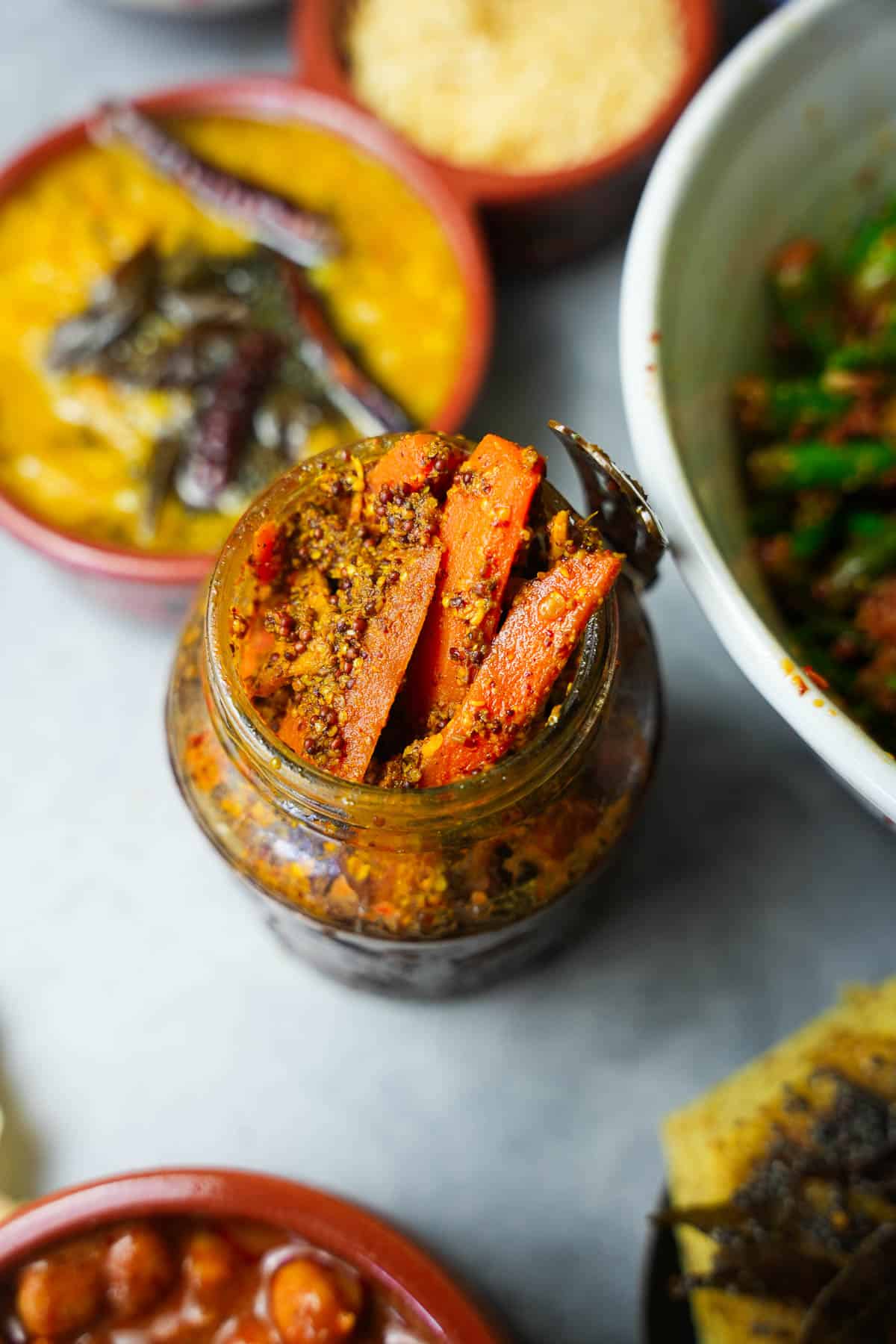
🤯 Gajar Ka Achar Variations
✅ Turmeric and Black Pepper Carrot Pickle
There is already some dried turmeric in this recipe, but what about pumping up the medicinal qualities of the carrot achar by incorporating a couple of tablespoons of fresh shredded turmeric and a dash of black pepper? The piperine in black pepper increases the body’s ability to absorb the antioxidant and anti-inflammatory properties of the curcumin in turmeric. Don’t take it from me. Here’s an article about this magical combination.
✅Sweet and Sour Indian pickled carrots
If you prefer a milder and sweeter version, try a sweet and sour Carrot Pickle. In addition to the traditional spices, add a touch of jaggery or brown sugar and a splash of apple cider vinegar in addition to the traditional spices. A sprinkle of lightly toasted, split mustard seeds and crushed fennel seeds can be nice here as the sweetness brings out lovely anise-like flavors from the fennel. This variation balances the tanginess with a subtle sweetness, creating a harmonious flavor, similar to Gajar Ka Murabba, a sweet and tangy carrot preserve popular in North India.
📖 Preparation: How to make gajar ka achar
I will walk you through the whole process of turning these basic root veggies into your new favey side dish. Or you can follow along with the easy-to-print recipe card towards the bottom of this page.
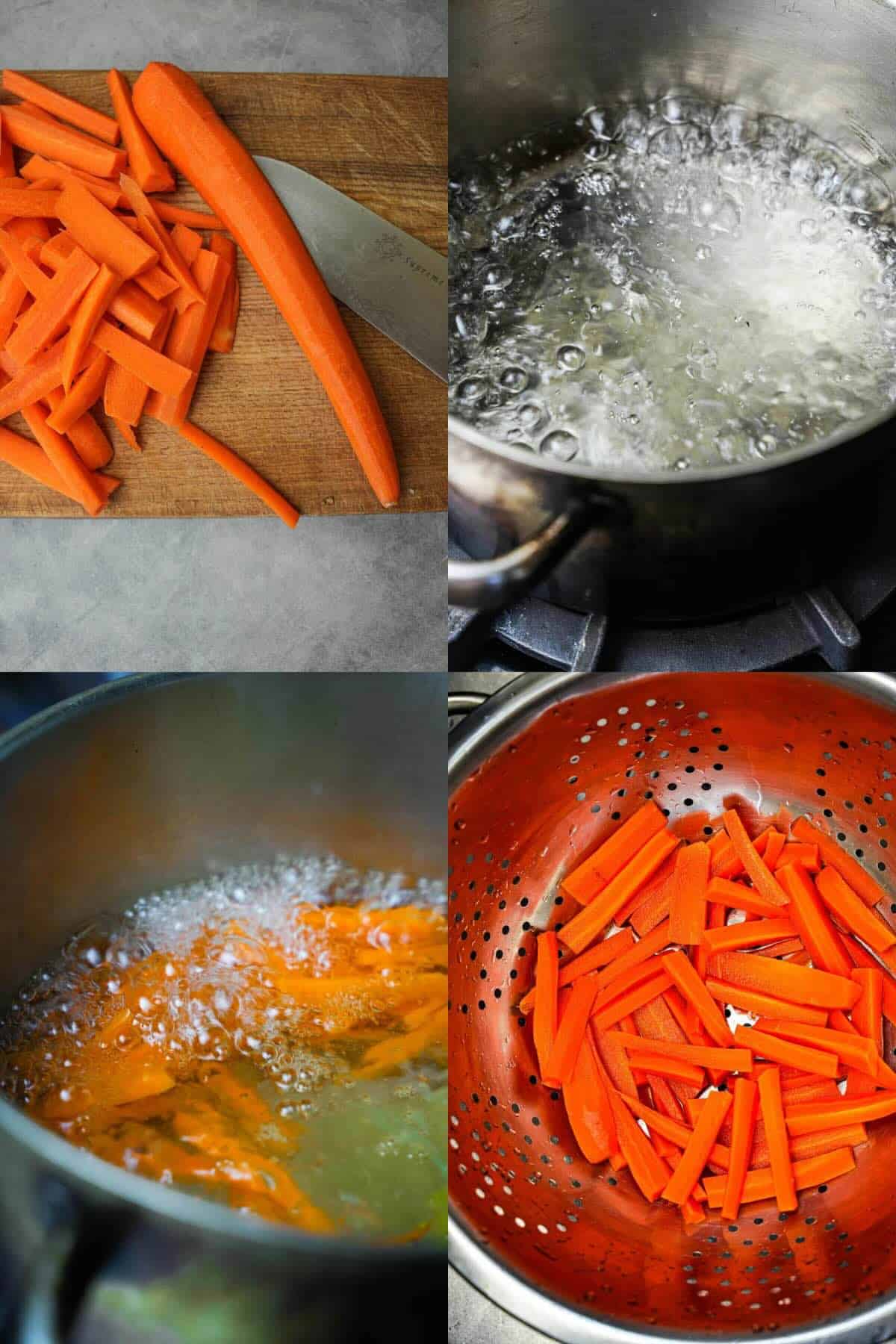
Step 1
Start by peeling the 3 medium-sized carrots and cutting them into 2-inch (5 cm.) strips. Set the carrot strips aside for now. If you have a ton of leftover carrots, and carrot scaps, you can use them up to make my carrot lentil soup!
Step 2
Fill a pot with water and bring it to a boil over high heat.
Step 3
Once the water is boiling, carefully add the carrot strips and blanch them for 90 seconds. This brief blanching process helps to slightly soften and sterilize the carrots.
Step 4
Drain the blanched carrot strips in a colander or wire mesh strainer. Allow them to dry completely while you prepare the remaining ingredients. This ensures that excess moisture is removed before mixing with the other ingredients, which will improve the keeping quality of the pickle.

Step 5
Slice the green chilies (use more if desired) into long, thin strips. Peel the fresh ginger and cut it into matchstick-like strips. Set the sliced green chilies and ginger strips aside.
Step 6
In a dry pan over medium heat, lightly toast the fenugreek and cumin seeds for about three minutes or until they become fragrant.
Step 7
Grind the toasted fenugreek, cumin seeds, and mustard seeds into a coarse powder using a blender, spice grinder, or mortar and pestle.
Step 8
In a small bowl, combine the ground seeds with turmeric powder, one Kashmiri red chili powder, tamarind concentrate, white vinegar, and salt. Mix these ingredients well to create a flavorful spice mixture.

Step 9
Heat ½ cup of mustard oil in a saucepan over medium heat until it starts to smoke. Turn off the heat and let the oil cool for about 20 minutes. This step is necessary to mellow the bitter flavor of the mustard oil. You may skip this step if you use peanut or vegetable oil as a substitute.
Step 10
Whisk or use the tines of a fork to mix the oil into the spice mixture until it forms a smooth oily paste. This oil-spice mixture will act as the base for the pickle.
Step 11
Place the blanched carrot strips, sliced green chilies, and ginger strips into a bowl. Pour the spiced oil mixture over the carrots and mix everything thoroughly, ensuring that the carrots are evenly coated with the flavors.
Step 12
Transfer the mixed carrot pickle to a sterilized, airtight glass jar. Press the pickle down with a spoon to remove any air bubbles, and ensure it is tightly packed within the jar.
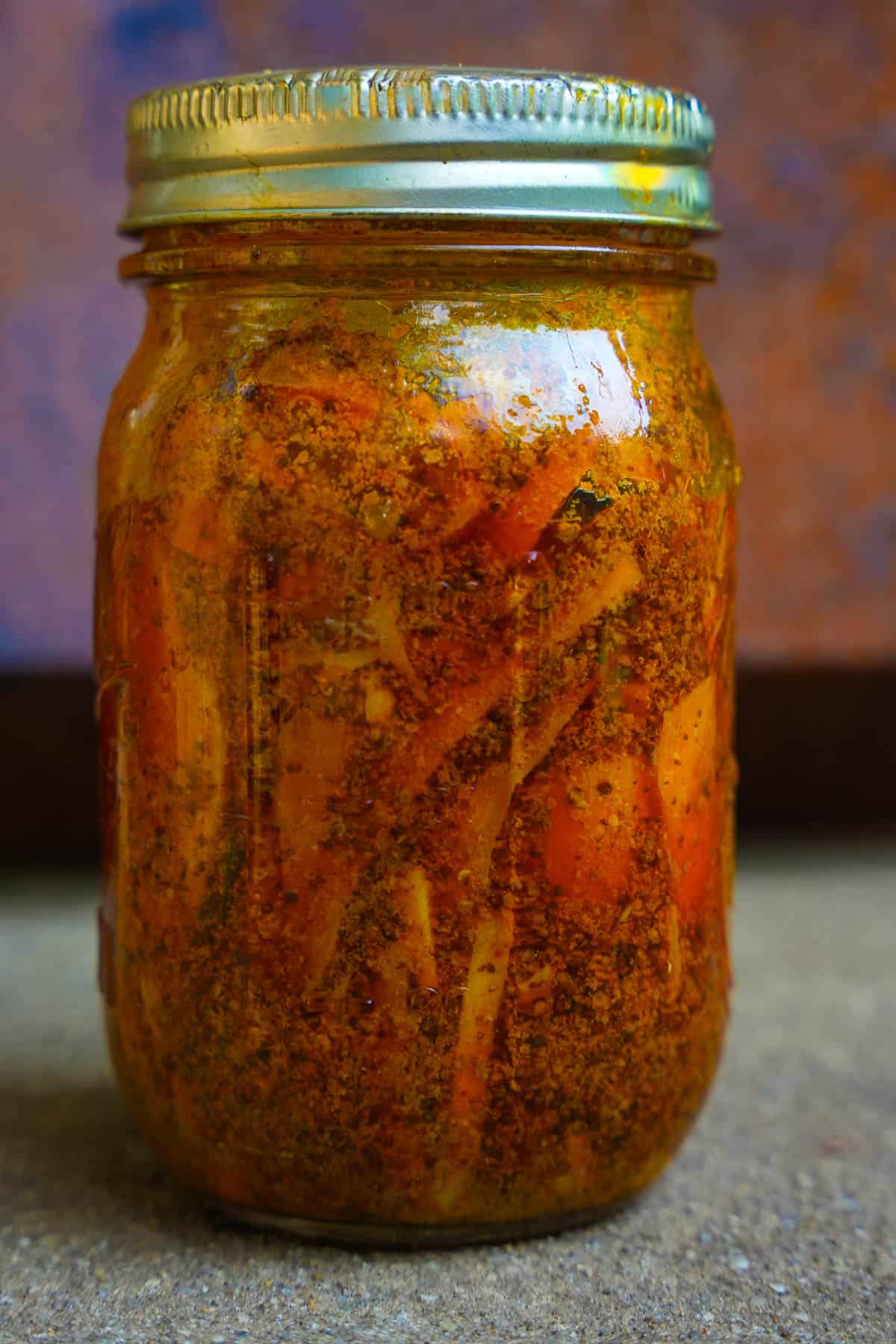
Step 13
Close the jar with a tight-fitting lid and let it sit at room temperature for two days to allow fermentation to occur. The flavors will intensify and develop during this fermentation period, creating a deliciously tangy and spicy pickle.

Step 14
After the initial fermentation, transfer the jar of pickles to the refrigerator. Allow it to mature in the fridge for up to six weeks. The pickle will continue to develop its flavors and achieve its optimal taste during this ripening period.
When you serve it with food, it's nice to have a sweet condiment to balance it like tamarind chutney or candied amla.
🍽️Serving Ideas
This carrot pickle recipe makes everything you eat it with more flavorful, and aids in digestion! Here are some suggested dishes to have it with:
Serve a generous spoonful of Gajar Ka Achar alongside a comforting bowl of masoor dal, or arhar dal tadka, served over fragrant basmati rice or aromatic coconut rice with my vegan butter chicken (made with my from-scratch homemade seitan).
Add a vibrant touch to your chaat spread by serving pickled carrot alongside crispy onion bhaji, medhu vadai, or sweet potato chaat covered which you can garnish with sev and pomegranate seeds, or masala phool makhana.
Upgrade the flavors of your favorite sabjis with a spoonful of pickle. Whether it's veggie-packed aviyal over aged basmati, the Sadhya classic olan, comforting ridge gourd kootu, parval curry, or Punjabi dry bhindi, the pickle adds a tangy and spicy twist, taking your sabjis to the next level.
Complete your vegan Indian feast with fluffy and flavorful potato-stuffed kulchas, flaky Kerala parottas, or Moroccan msemen.
Add carrot pickle to vegan middle eastern classics like oyster mushroom shawarma, vegan kofta, lentil meatballs, bulgur pilaf, Turkish lentil soup, or Moroccan loubia. These pickled carrots bring a bright, spicy note that perfectly complements the rich and savory flavors of these dishes.

👉Top tips
Here are some tips to help you make the vegan Carrot Pickle perfectly:
- Cut the carrots into a uniform size and shape. This ensures that the carrots cook and ferment evenly, resulting in a consistent texture throughout the pickle.
- If you enjoy the flavor of garlic, feel free to include it in the pickle. Peel and finely mince 2-3 cloves of garlic and add them along with the sliced green chilies and ginger strips. Garlic adds an intense aromatic note to the pickle.
- The thickness of tamarind concentrates can vary. If you are using a thick and dark tamarind concentrate, such as TAMCON, you may want to use slightly less than the suggested amount. Start with half the recommended quantity, taste the pickle, and gradually add more if desired. This way, you can control the tanginess to suit your preference.
- After the initial fermentation period of two days at room temperature, transfer the jar to the refrigerator for up to six weeks. The pickle will continue to mature and develop its flavors during this time. Patience is key to achieving a perfectly flavorful and well-ripened pickle.
🤷♀️Recipe FAQs
Yes, carrot pickle is vegan as it does not contain any animal products and is made solely from plant-based ingredients.
How can you tell if gajar ka achar has spoiled?
You can tell if carrot pickle has spoiled by checking for signs of mold, an off-putting odor, or a significant change in color and texture. Trust your senses and discard it if any doubts arise. If you live in a very hot climate, you may want to shorten the time you let the carrot ferment at room temperature to a maximum of 16 hours, or increase the salt in the recipe to discourage mold growth.
Yes, you can use other root vegetables such as radishes, turnips, beets, and Indian purple carrots as a substitute for the traditional orange carrots in the pickle. The pickle is particularly attractive when made with a mixture of colored carrots and watermelon radishes.
❄️Refrigeration: After making the Indian Carrot Pickle, it is important to store it in the refrigerator. The cool temperature helps to maintain its freshness and prolong its shelf life.
🫙Proper Container: Choose a storage container that is clean, dry, and airtight. It is essential to avoid containers that could harbor bacteria if scratched. Opt for glass jars or food-grade ceramic containers.
🥶Avoid Freezing: It is not recommended to freeze the achar. Freezing will wreak havoc on the texture and flavor of the pickle.
🙅♀️💦Moisture Prevention: Condensation or moisture can lead to the growth of bacteria and mold, compromising the quality and safety of the pickle. Make sure your jar has a good seal on it, and always use a clean, dry spoon to take out the pickle and avoid introducing moisture into the storage container.
✌️Serve these with Punjabi carrot pickle:

Gajar Ka Achar (Indian Carrot pickle)
Equipment
Ingredients
- 3 medium size carrots peeled and cut into 2 inch strips
- 3 green chillies hari mirch
- 1 inch of fresh ginger peeled and cut into matchstick strips
- ½ teaspoon Fenugreek seeds
- 1 tablespoon cumin seeds jeera
- 2 tablespoons mustard seeds
- 1 teaspoon Turmeric powder
- 1 tablespoon Kashmiri red chili powder
- 4 teaspoons tamarind concentrate
- 1 tablespoon white vinegar
- 1 teaspoon salt
- ½ cup mustard oil peanut oil, or vegetable oil
Instructions
- Peel the 3 medium-sized carrots and cut them into 2-inch strips. Set aside.
- Bring a pot of water to a boil over high heat. Once boiling, add the carrots and blanch them for 90 seconds to slightly soften them.
- Drain the carrots in a colander or wire mesh strainer and let them dry completely as you prepare the remaining ingredients.
- Slice the 3 green chilies (hari mirch) into long thin strips. Peel the fresh ginger. Cut the ginger into matchstick-like strips. Set these aside as well.
- Lightly toast the fenugreek and cumin seeds in a dry pan over medium heat for 3 minutes until fragrant.
- Using a blender, spice grinder, or mortar and pestle, grind the cumin, fenugreek, and mustard seeds into a coarse powder.
- In a small bowl, combine the ground seeds, turmeric powder, Kashmiri red chili powder, tamarind, vinegar, and salt.
- Heat ½ cup of mustard oil in a saucepan over medium heat. Once the oil is smoking hot, turn off the heat, and allow the oil to cool for 20 minutes. If using peanut oil or vegetable oil, you may skip this step, as it is just being done to mellow down the bitter flavor of the mustard oil.
- Mix the oil into the spices with a small whisk or tines of a fork until smoothly combined.
- Place the carrots, sliced green chilies, and ginger strips into a bowl, and mix the spiced oil into them.
- Transfer the mixed carrot pickle to a sterilized, airtight glass jar. Press the pickle down with a spoon to remove any air bubbles and ensure it is tightly packed.
- Close the jar with a tight-fitting lid and keep it at room temperature for 24-48 hours to allow fermentation to occur. During this time, the flavors will intensify and develop.
- After the initial fermentation period, transfer the jar of pickles to the refrigerator. Let it mature in the fridge for up to 6 weeks. The pickle’s flavors will continue to develop as it ripens under refrigeration.
Notes
- Remember to store the pickle in the refrigerator after each use to maintain its freshness and longevity.
- Always use a dry, clean metal spoon or fork to remove pickle from the jar to avoid introducing moisture or bacteria into the jar that can lead to spoilage.
- To sterilize glass jars for pickling, wash them with hot, soapy water, rinse thoroughly, and place them in a pot of boiling water for about 10 minutes. Remove the sterilized jars and lids, allowing them to air dry completely before use. Following these steps ensures a clean and safe environment for your pickling adventures.

Enter your email & I'll send it to your inbox. Plus, get great new recipes from me every week!
By submitting this form, you consent to receive emails from Cinnamon Snail.

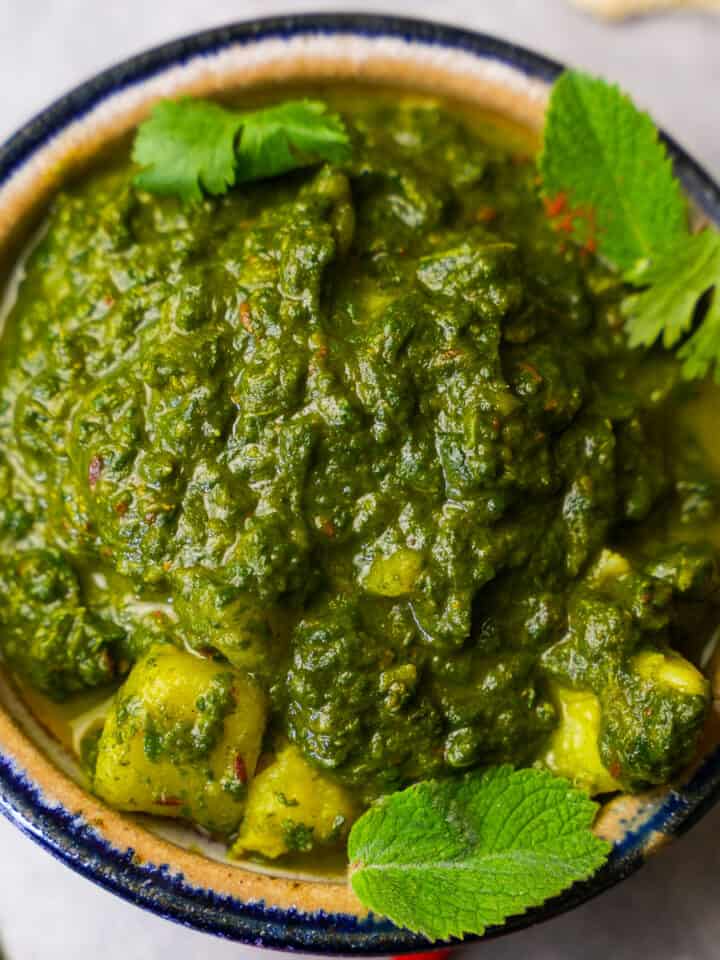
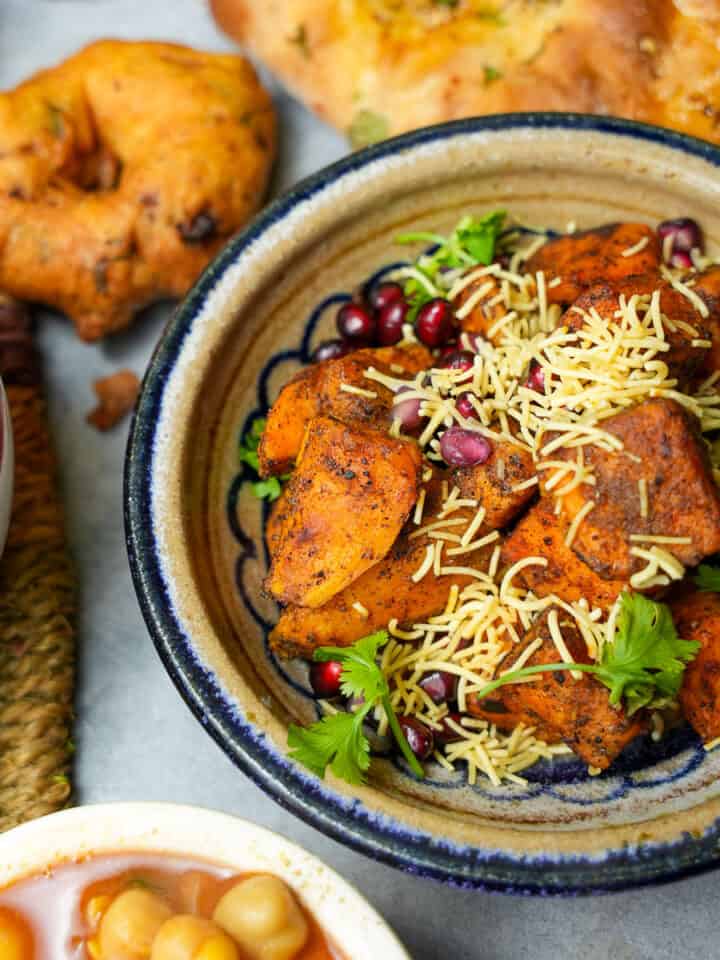
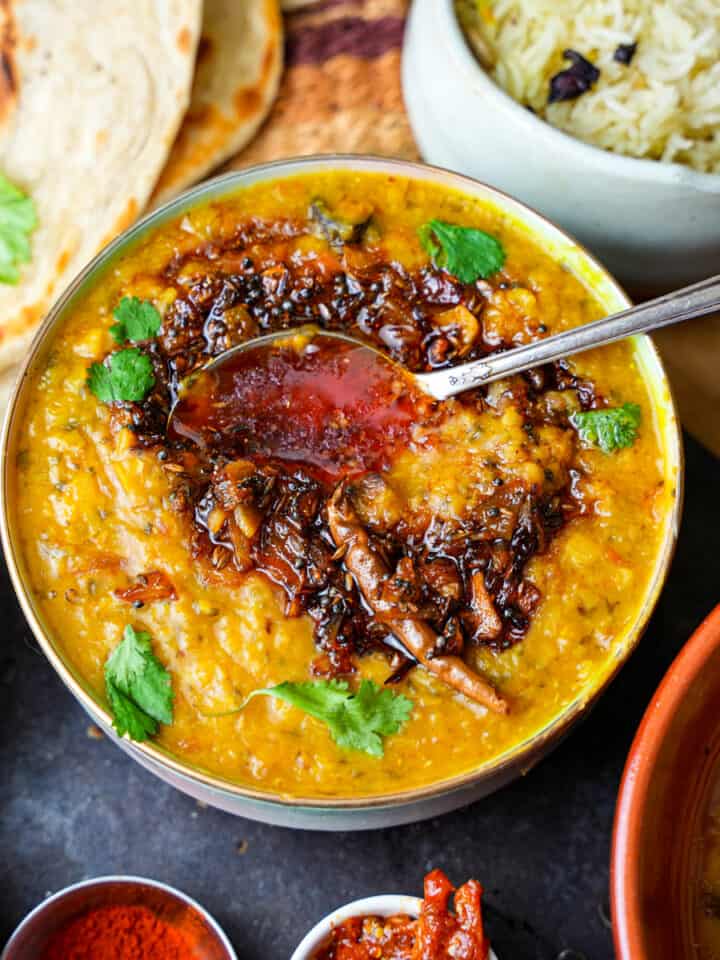







JJ says
Awesome aroma, great spicy heat, lots to enjoy here and that is just at the beginning of the fermentation process. Looking forward to seeing the final result in a couple of weeks. I am expecting a 5 star review!